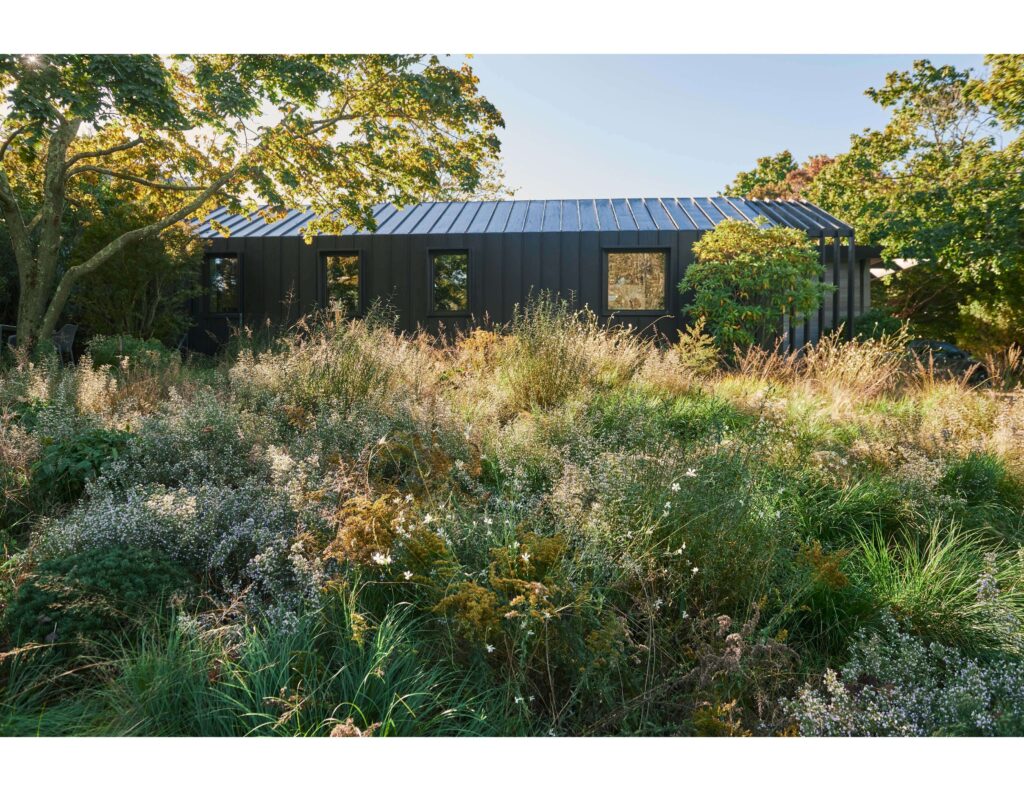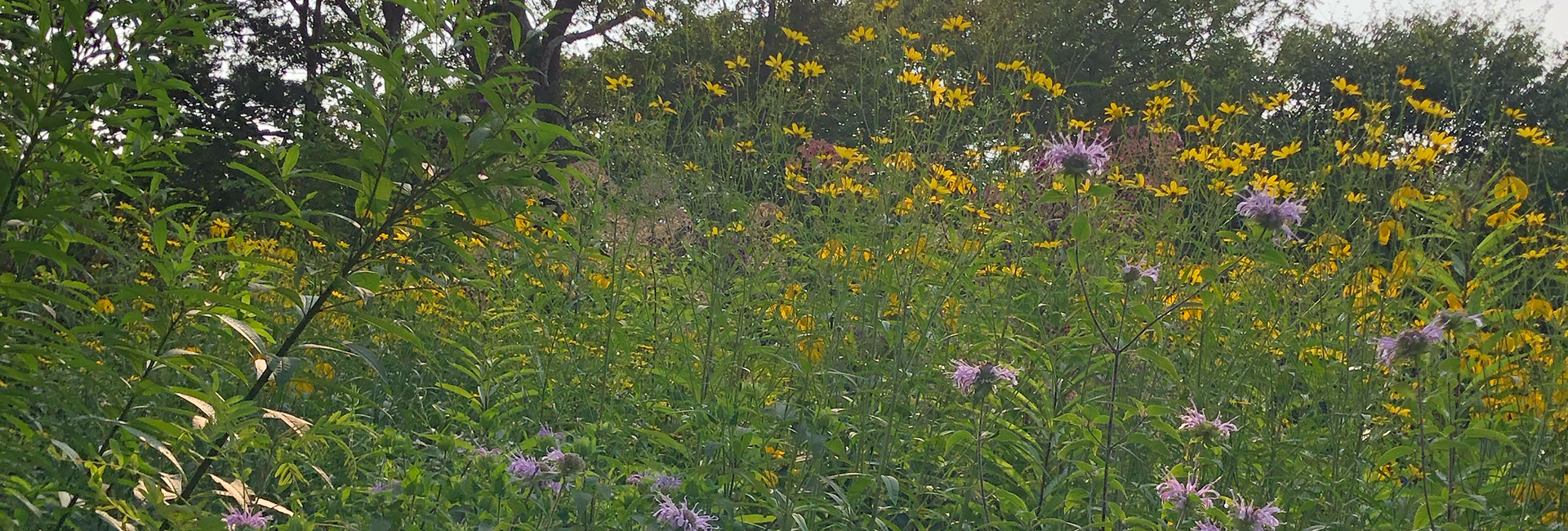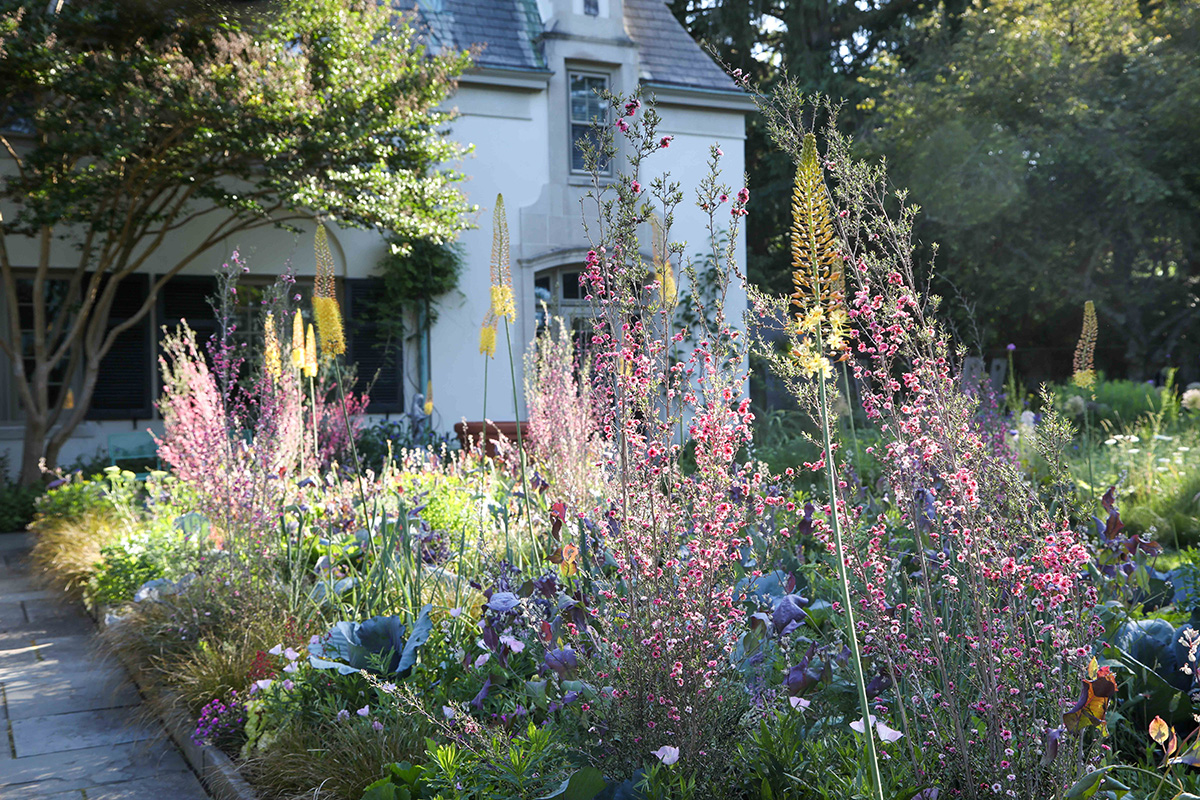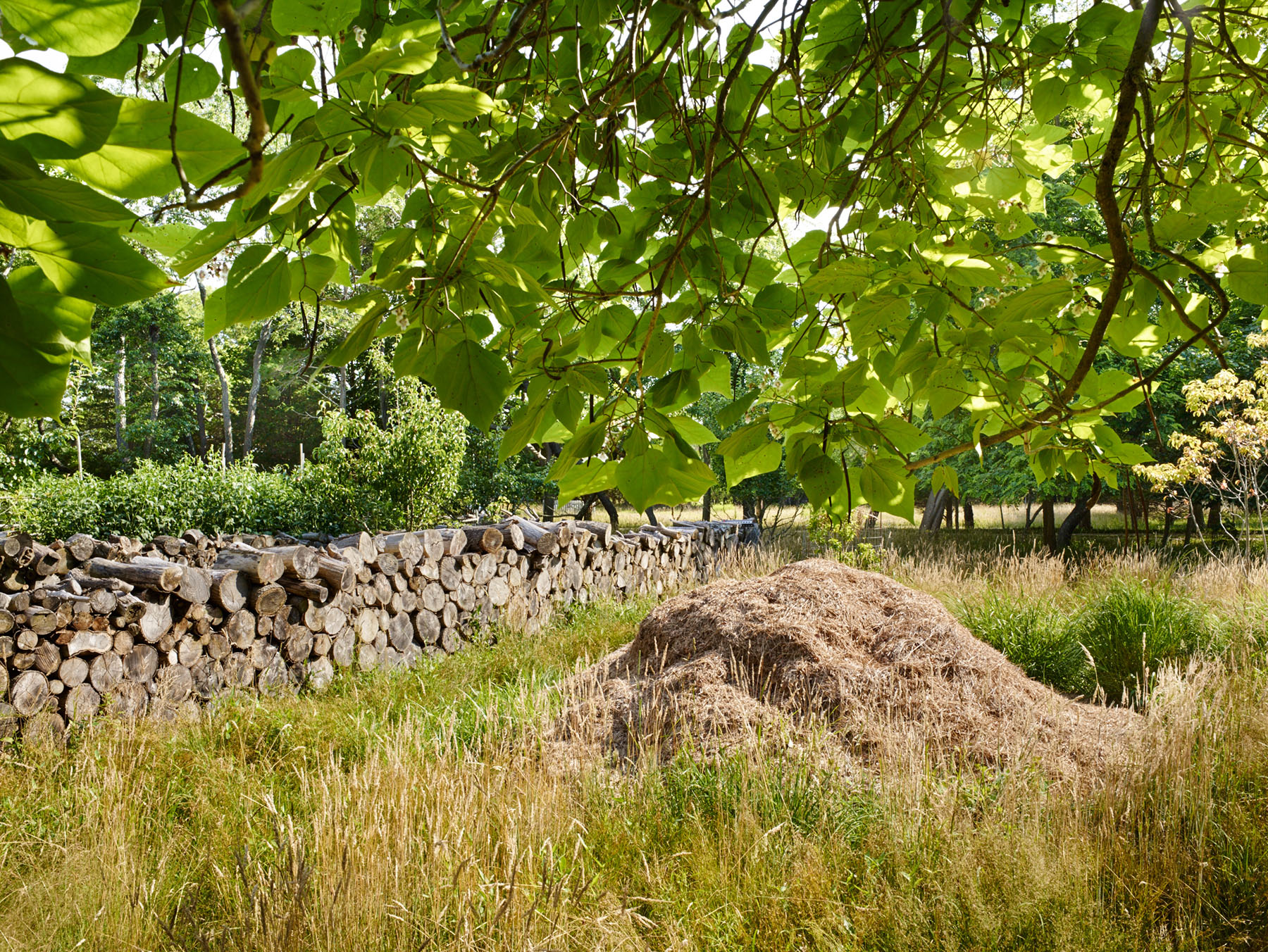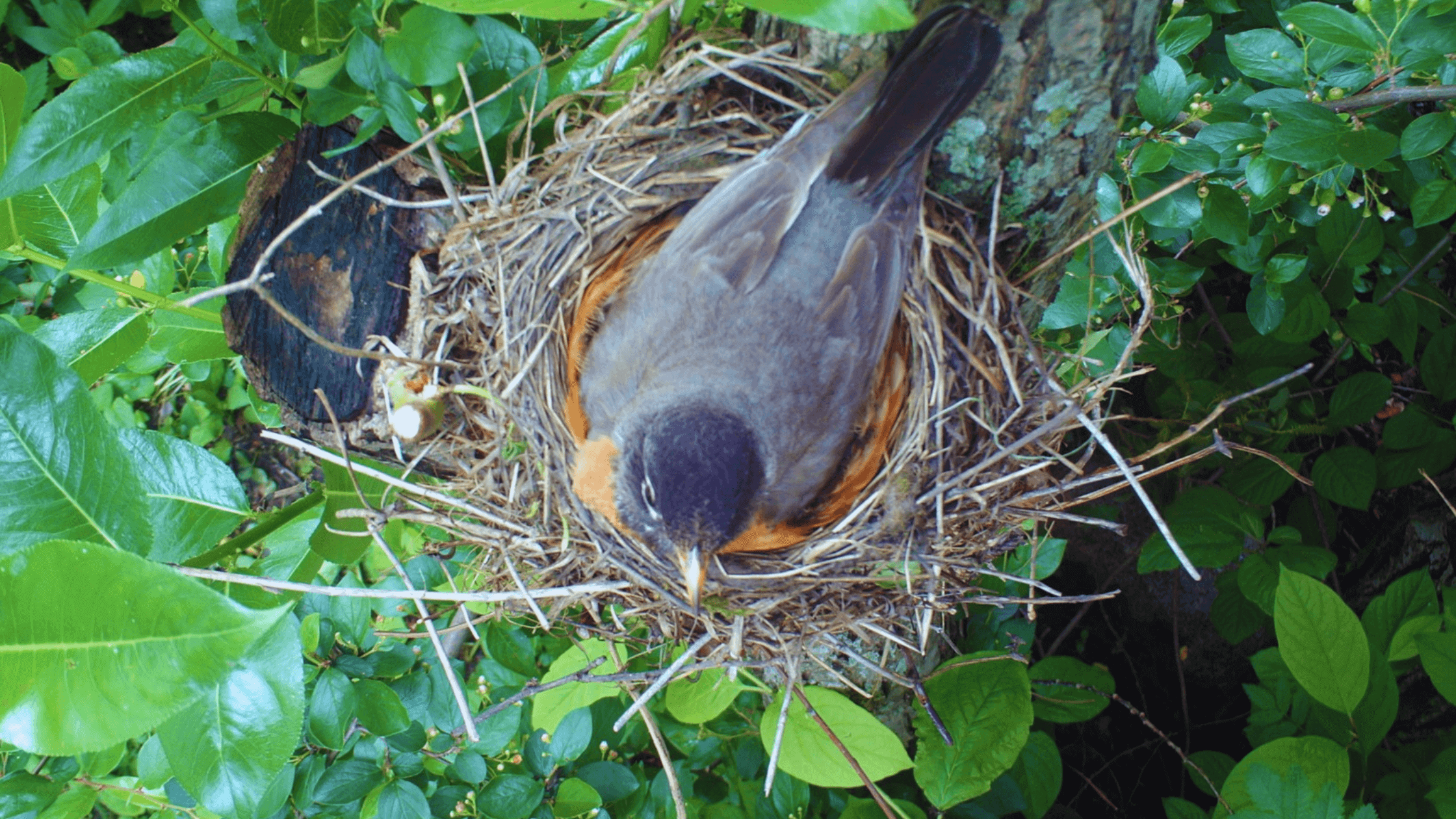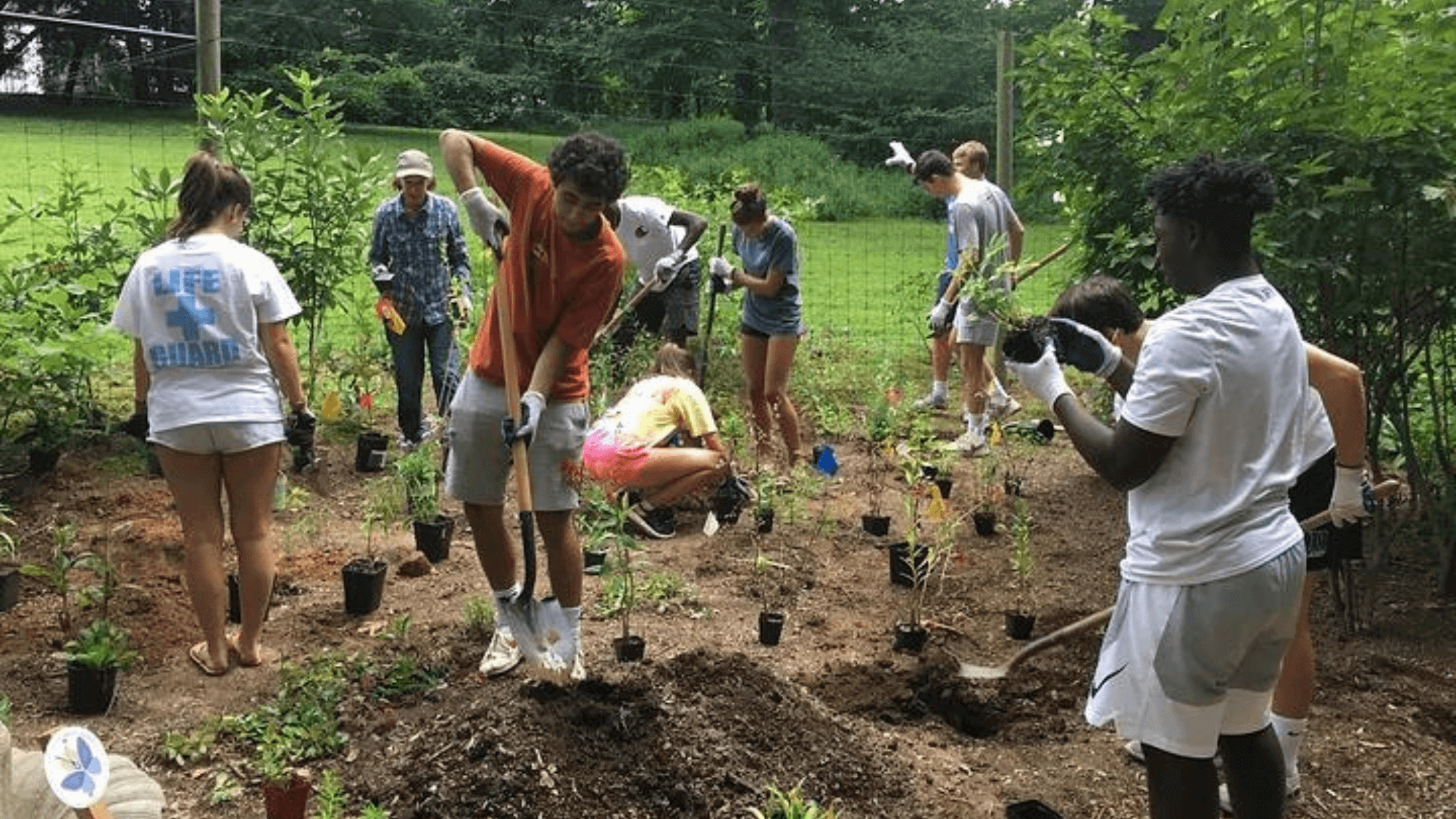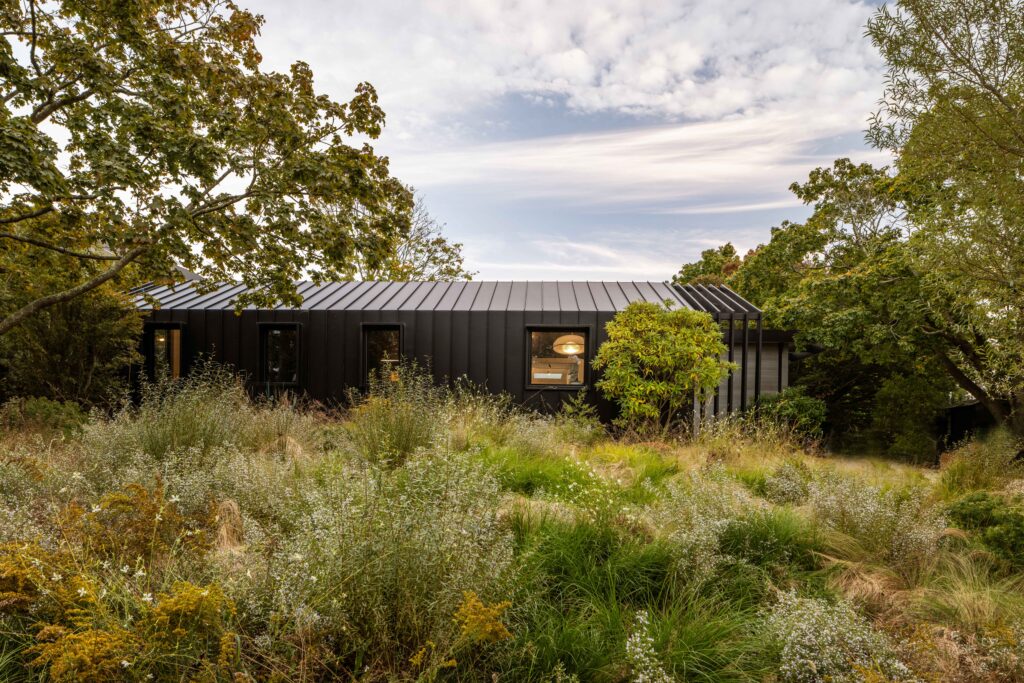
Photograph courtesy of Nick and Christina Martin.
This is part of a series with Gardenista, which ran on January 26, 2024.
“Mother nature is the ultimate landscape designer. We’re just her helpers,” says Emilia deMauro, who, along with her sister Anna, runs the East Hampton, NY, landscape-design firm deMauro + deMauro. Their approach to design is imbued with a sense of community and responsibility to preserve the beauty of the native environment.
The sisters grew up shuttling between the rolling hills of rural Northeastern Pennsylvania, where their artist dad lived, and the farm fields and overgrown thickets of the east end of Long Island, where their mother was farming and gardening. “Both of those landscapes play a huge part in our designs,” says Anna, who studied at the Florence Academy of Art in Italy. “There’s something so beautiful in the wildness. We’re constantly pulling from those memories.”
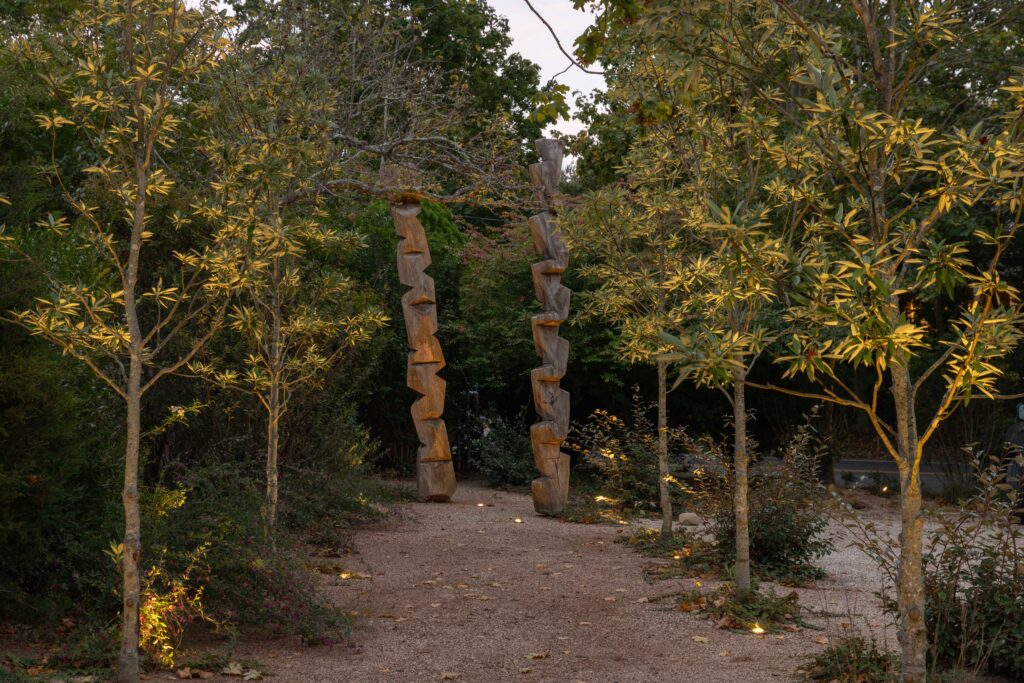
At the back of the property, Anna and Emilia planted a loose allée of native single stem Magnolia virginiana ‘Green Shadow’ trees, leading to a wood sculpture. “This space was intended to have a slightly more formal feeling from the front of the property with fewer plantings and more stone dust,” says Emilia.
They found kindred spirits in clients architect Nick Martin and his wife Christina. The couple believed strongly in “pivoting away from green lawns that require chemicals and continual labor, and, most important, that strip our community of habitat for creatures big and small,” says Christina. They hired the sisters to design the landscape outside of Martin Architects, Nick’s new Bridgehampton office on the Montauk highway. A busy thoroughfare, situated just past a gas station and across from a bank, didn’t deter them from achieving their joint vision: a self-sufficient oasis, lush with native plants and alive with birds, butterflies, and wildlife, that looks beautiful year-round.
The property was neglected when the Martins bought it. “To transform the space, we removed the asphalt driveway, regraded the land because the pitch was so bad, with the goal that it wouldn’t need irrigation,” says Nick. He also tried to reuse as many materials as possible.
Nick wanted to use a series of rocks to create something sculptural, but “we realized that the most sculptural way of using them was to leave them as if ‘they fell off the truck.’ They formed a grouping as a gathering space hinging the composition of the grade to the structure” he says. “We modified the layout, added succulents, and nature did the rest.”
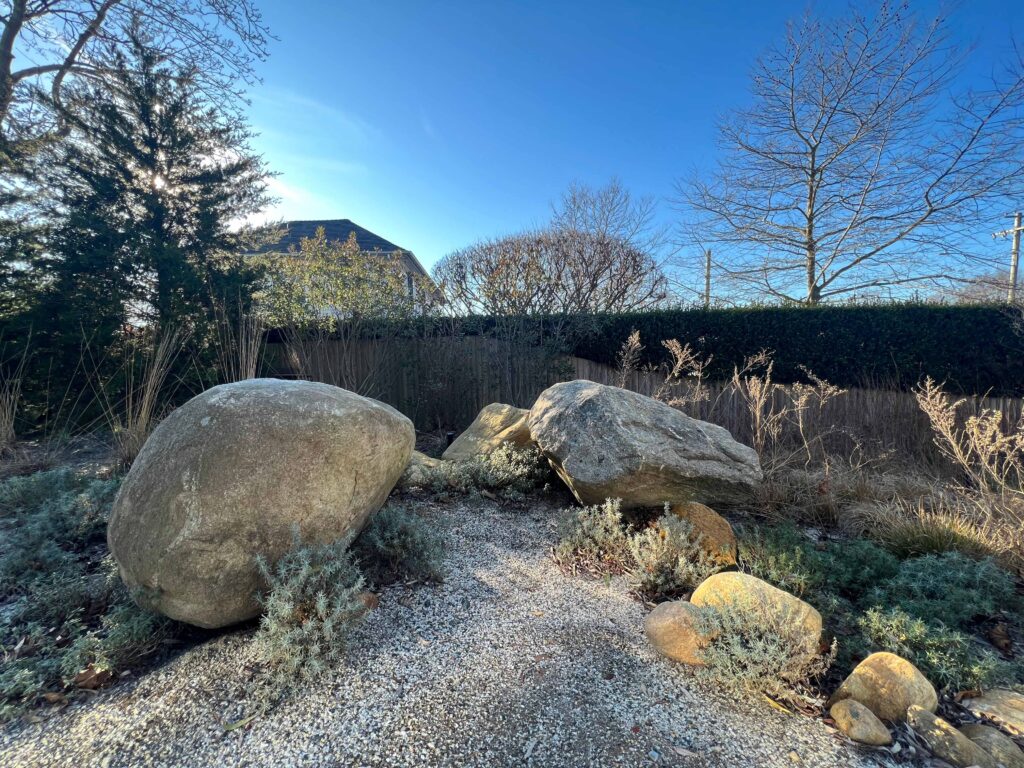
For the front-yard meadow, which is 90% native, the deMauros handpicked every single plant. They had roughly plotted out a matrix on paper in the office before “throwing it all up in the air come planting time,” says Anna with a laugh of their instinctual process. “Something happens when you lay out a garden,” adds Emilia. “There’s a little chaos and unknown in nature and that’s where the fun happens. You can’t be too rigid.”
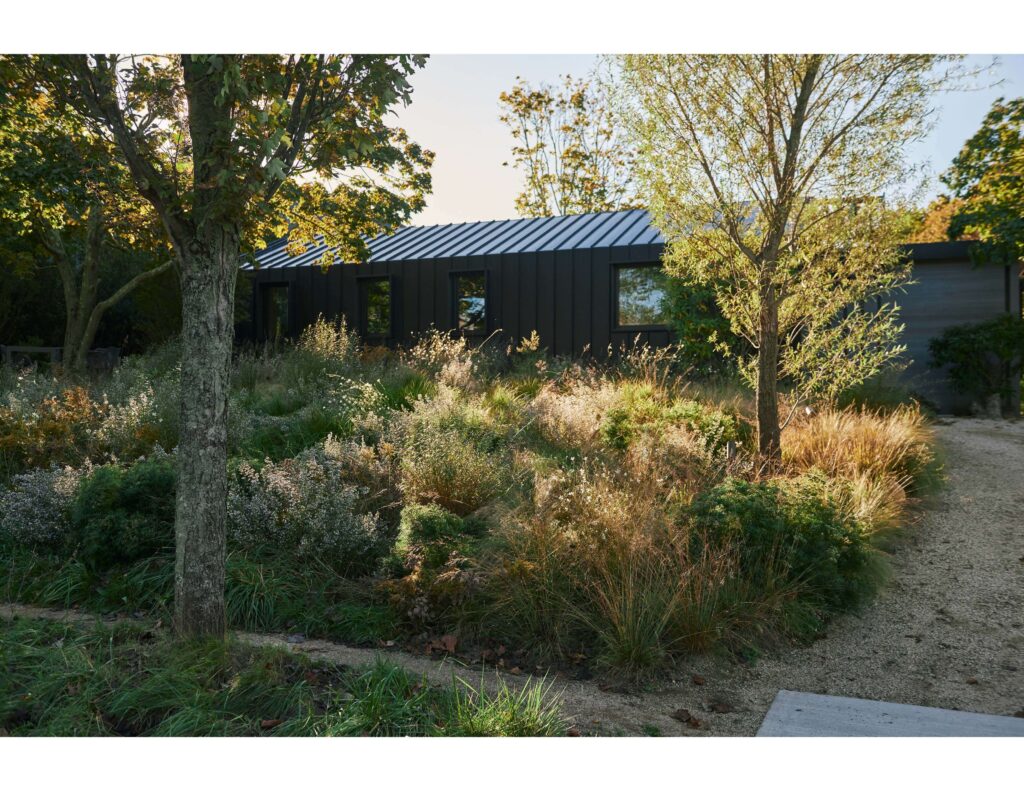
In front of the property is an old footpath that has been worn away by people walking along it over the years. “We wanted to honor it, so we covered it with stone dust with the hope that people will continue to use it daily and enjoy the insects and birds, and just the plain old beauty of the garden,” says Christina.
While the garden is not even a year old, it already has become an attraction for wildlife and humans alike. The Martins have spotted an uncommon Henry’s Elfin butterfly and specialized native bees like Colletes banksi. “The meadow has become a haven for insects and bird, all sharing space,” says Christina, who is also studying biodynamic gardening. It’s also attracted people, including Perfect Earth Project founder Edwina von Gal, who recently was compelled to step on the brakes while driving by to find out more. She’s not the only one. “We have friends stopping by to ask about our plant lists,” says Christina. “That’s the whole idea. We want to share our garden and inspire as many people as possible because the more people who do this, the better.”
For the hardscape, the sisters used stone dust for the driveway and paths. It’s water permeable, acts as a mulch, and is “beautiful at all times but especially in winter when the garden has an open and serene feeling to it,” says Emilia. Flanked by asters, narrowleaf mountain mint, prairie dropseed grass, and three kinds of Carex, a Magnolia virginiana ‘Sweet Thing’ tree anchors one end of the path.
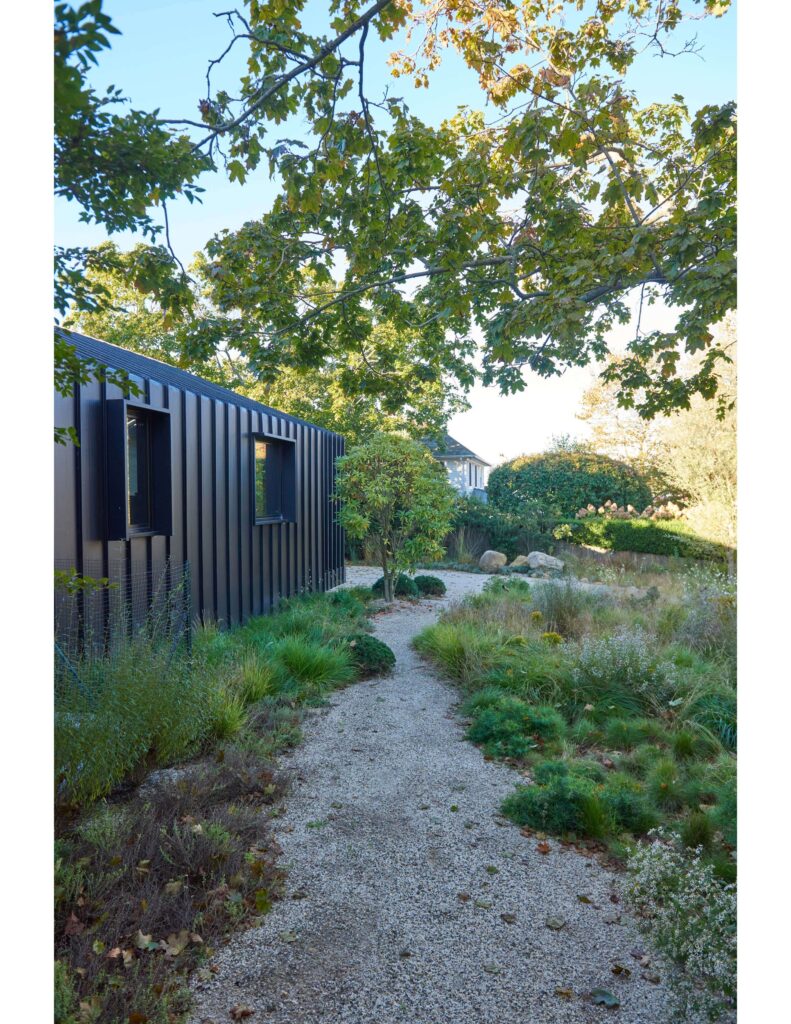
The deMauros are encouraged that aesthetics are shifting. “People want to do the right thing,” says Emilia. She and her sister have seen how frustrated people are with the time, money, and effort to keep green lawns and clipped hedges. “It’s important to have these conversations. No one needs a ‘perfect’ lawn. We want to show people that they can have habitat on their property and it can be beautiful.”
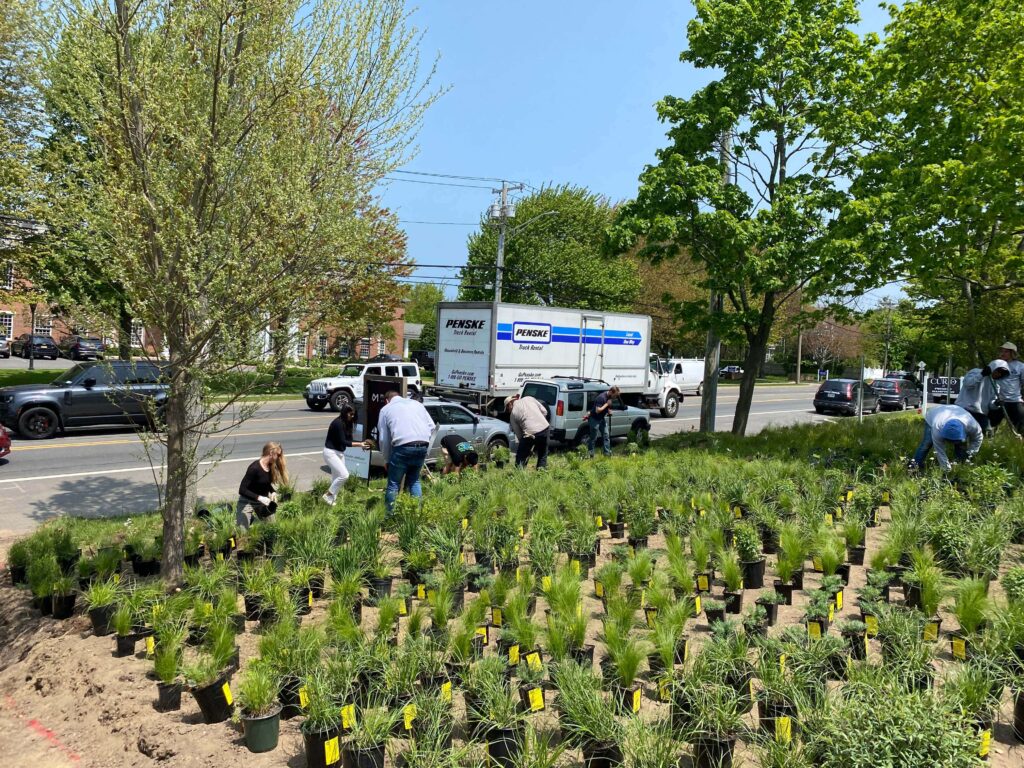
The whole office came out to plant the meadow together. “We wanted everyone to have a part in the garden and I was amazed at how much fun everyone was having putting their hands in the dirt,” says Christina. “It was a bonding experience.”
For the meadow in the front of the property, the deMauros devised an interspecies matrix planting. They densely planted small perennials (grasses such as prairie dropseed and wavy hair grass and flowering species including slender blue iris, gray goldenrod, and white heath asters) approximately 12- to 18-inches apart to help with weed suppression and water conservation. “We are always considering plants that match each other, such as sun/shade patterns, seasonal interest/growth patterns, succession bloom, site conditions,” says Anna.
